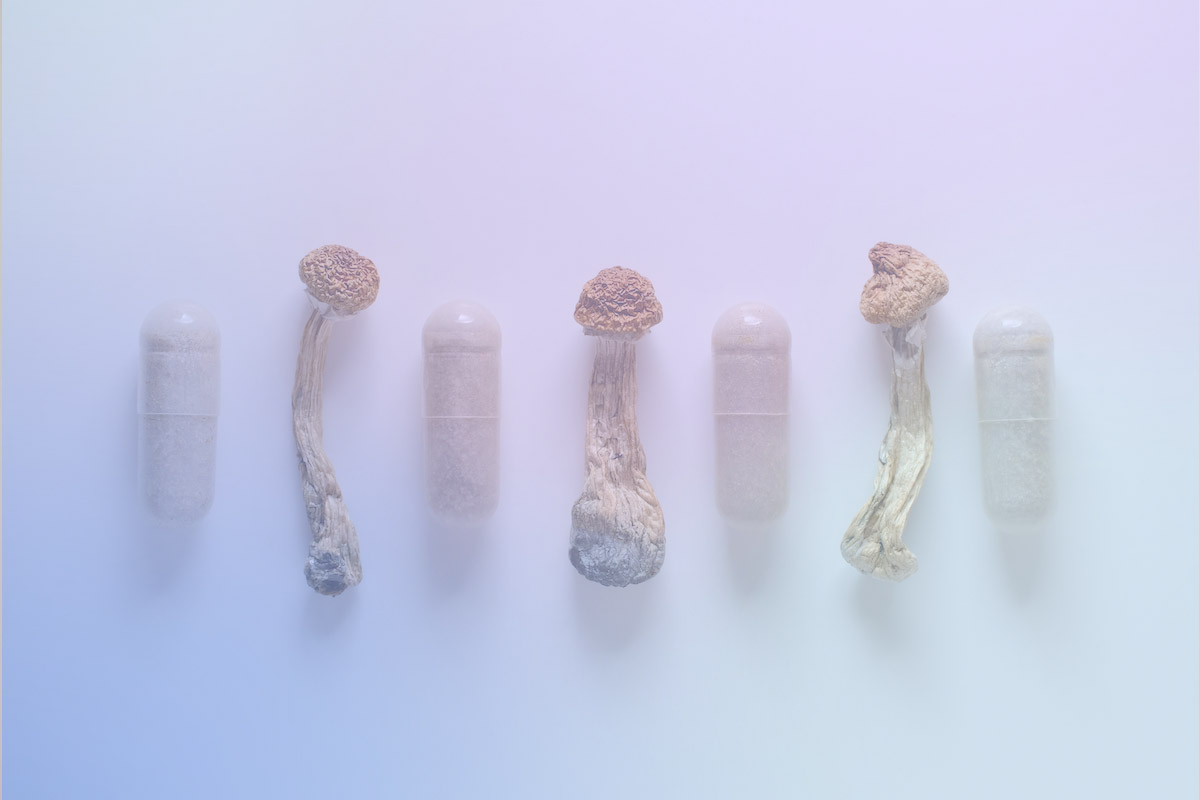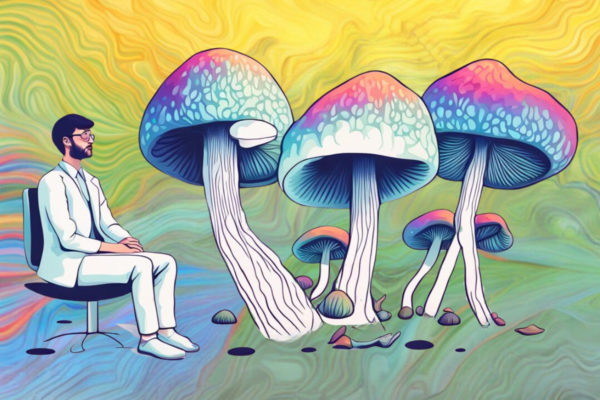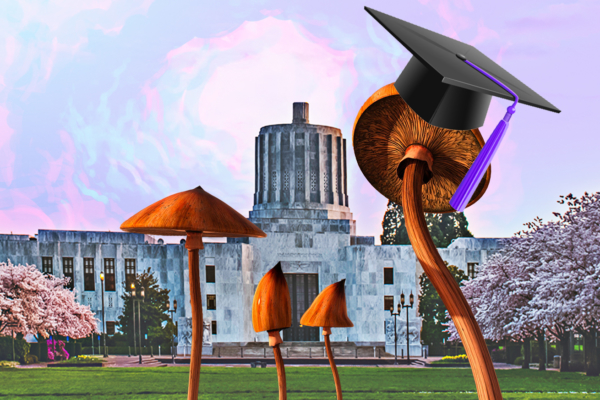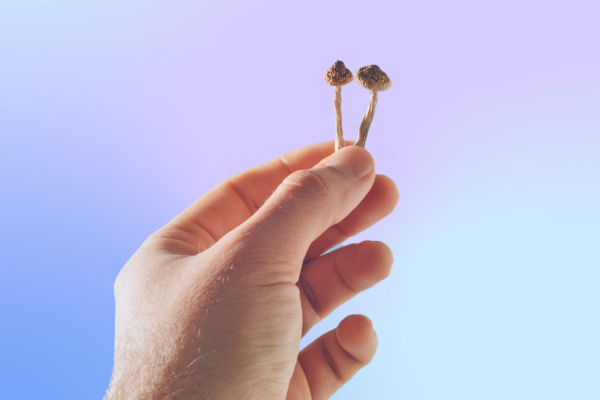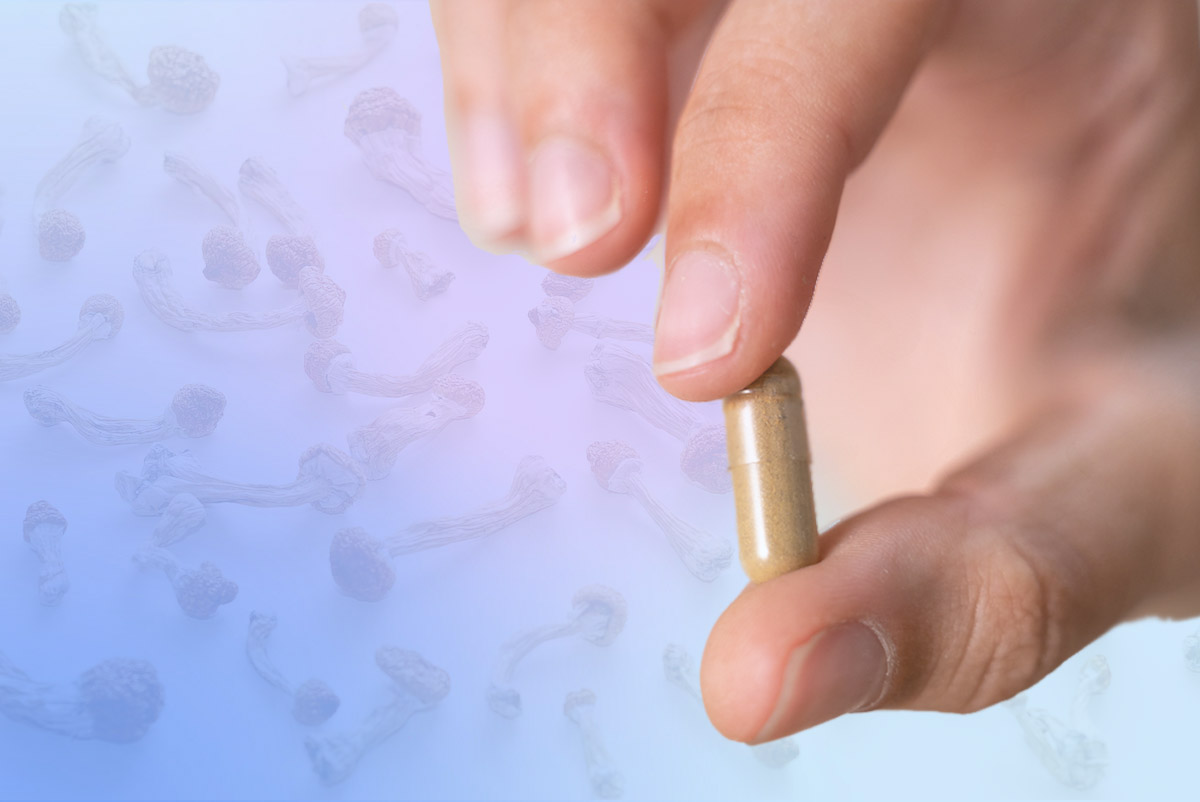
It’s estimated that in the U.S., over 30 million people have used some form of psychedelics. The majority of psychedelics research is focused on health-related outcomes of full-dose psychedelics, but the increasing popularity of microdosing warrants further exploration and education to understand its therapeutic value, mitigate harm, and reduce stigma. Before we delve into the practices of microdosing, it’s essential to understand its history and the evidence that supports – and refutes – microdosing.
[ez-toc]
A (Brief) History of Microdosing
Microdosing refers to the practice of regularly or semi-regularly consuming low doses of psychoactive substances such as lysergic acid diethylamide (LSD) or psilocybin. While the earliest occurrence of microdosing is unknown, anthropological reports suggest these substances were used harmoniously in low doses in many aspects of daily life, including for the treatment of ailments and pain. In recent years, this practice has faced an explosive growth in popularity, bringing with it a wave of positively discussed reports, books, documentaries, scientific research, and media publications. This recent rise in popularity is often attributed to work led by James Fadiman, a renowned American writer and researcher on psychedelic use who popularized the term following the publication of The Psychedelic Explorers Guide in 2011.
While typical psychedelic use produces noticeable and profound changes in cognition, perception, affect, and neurophysiology, microdosing is frequently described as a sub-threshold or subsensory amount producing no noticeable alterations in consciousness and minimal to no identifiable acute effects. Anecdotal accounts of microdosing report generally positive outcomes, including but not limited to improved mood, vitality and wellbeing, productivity, focus, energy, social ability, memory, mindfulness, creativity, and a reduction of negative emotions.
By these accounts, microdosing affords many of the benefits of full-dose psychedelics with substantially less risk. But does the evidence support this view?
The Good, the Bad, and the Statistically Insignificant
Over the past century dozens of studies have examined the effects of microdosing, reporting a wide variety of motives for microdosing psychedelics, including performance enhancement, mood enhancement, curiosity, treatment of health conditions, self-fulfillment, coping with negative situations, increasing social connection, improving mental health, personal or spiritual development, and enhancing cognitive performance. Participants generally report confidence that microdosing fulfilled these aims, and even indicate that microdosing is being used as an alternative to conventional medicines for mental and physical health issues. The evidence, however, shows less confidence in these findings.
A wide range of self-report studies have shown promising results, but many of these findings have not been confirmed in placebo-controlled lab studies. In fact, three recent studies have brought the benefits of microdosing into question, suggesting these effects may be predominantly or even wholly explained by the placebo effect.
Balázs Szigeti, lead author of one of these studies, concluded, “Anecdotal reports about the benefits of microdosing are almost certainly biased by the placebo effect. Our findings confirmed some of the beneficial psychological effects of microdosing from anecdotal reports and observational studies, such as improved sense of wellbeing and life satisfaction. But we see the same improvements among participants taking placebos. This suggests that the improvements may not be due to the pharmacological action of the drug but can instead be explained by the placebo effect.”
The Pitfalls of Current Evidence
Before we conclude that any effects associated with microdosing are strictly placebo, it’s essential to evaluate the evidence. The truth as it ever were, is far more complicated and nuanced. There are several important pitfalls of current research that need to be addressed to adequately assess the effects of microdosing.
Firstly, there is no consensus around the practice of microdosing. The quantity of a microdose is difficult to define, and there is little agreement amongst researchers. Complicating matters, a threshold dose (a dose with measurable acute effects on conscious state) varies widely across individuals.
Secondly, the practice of blinding (preventing participants from knowing certain information such as whether they have consumed a placebo or psychedelic substance) is largely ineffective. Evidence suggests participants are often able to accurately identify a placebo versus a microdose. If participants can perceive the acute effects of a microdose, is it really a microdose?
Thirdly, evidence from microdosing has often reported contradictory or bidirectional effects. Individuals can experience remarkably different effects from microdosing, even at the same dose amount. Some variables such as mood and cognitive function have been reported to increase in some individuals but decrease in others.
The Need for More Research
There is currently little clinical evidence to support the benefits of microdosing. However, given the overwhelming number of anecdotal reports citing various and widespread benefits of microdosing, there is reason to be cautiously optimistic. While we don’t currently have enough evidence to support claims on the therapeutic value of microdosing, we can expect to see many controlled studies emerging to assess these claims. For the time being, there are no hard and fast answers, and psychonauts seeking to explore the world of microdosing do so at their own risk.
Microdosing in Practice
Psychedelics are federally illegal in the U.S. and research progress has been hampered by its prohibition. The therapeutic potential of full-dose psychedelics is well recognized, but given the limited empirical evidence for the benefits of microdosing, Unlimited Sciences does not advocate for or recommend microdosing. For anyone considering microdosing, ensure that you understand the legal and health-related risks of this decision, seek out a medical professional to discuss any potential interactions of psychedelic substances with current medications or medical conditions, and follow local and state guidelines regarding use. Based on available evidence, the following section can be used to educate yourself on practices of low-dose psychedelic use.
- Set and setting
It’s well documented that set and setting significantly influence the response to psychedelic drugs (“set” is an individual’s mindset and “setting” refers to their physical and social environment). Depending on our mindset and environment, the same drug at the same dose can produce anxiety or relaxation, fear or joy, or suspiciousness or intimacy. Popular anecdotal reports state the goal of microdosing is to continue to do what you normally do on any given day, but the quantity of a microdose is difficult to define and this approach should not be used for those with little to no experience with microdosing. It’s essential to start slowly and to maintain caution while you find an appropriate dose that works best for you.
For your physical environment, ensure a safe and familiar environment without clutter or overstimulation. Psychedelics can affect cognition, perception, and coordination, and you should take care to be in a physically safe and controlled environment. Don’t engage in activities where you could encounter harm, such as driving or operating heavy machinery.
For your mindset, the goal is to maintain a simple environment free of distractions while you determine the right dose, including distractions from typical day-to-day responsibilities or obligations. Ensure that you are properly hydrated and nourished and engage in mindfulness practices to maintain a sense of calm.
Lastly, identify a trusted and experienced guide, especially if this is your first time experiencing psychedelics. This individual will be responsible for ensuring your safety during the psychedelic experience.
- Dosage
The goal of microdosing is not to produce noticeable or profound changes in cognition and perception. Data from recent systematic reviews on low-dose psychedelics by Vince Polito and Paul Liknaitzky, and Joseph Rootman and colleagues summarizes microdose quantities used in past research. As an estimate, a microdose is between approximately one tenth and one twentieth of a typical recreational dose. Since an effective recreational dose can vary substantially from one individual to the next, use a conservative “low and slow” approach and start as low as possible as you identify an appropriate dose, especially if you aren’t sure of how much you’re giving yourself. Track your progress carefully and accurately through written records. Polito and Liknaitzky, and Rootman and colleagues, provide the following plausible dose ranges for microdoses of different substances based on previous research:
Psilocybe cubensis dried mushroom, oral ingestion: 0.1-0.5g/70kg (per 70kg bodyweight); Low dose ≤ 0.1g; Medium dose = 0.1-0.3g; High dose ≥ 0.3g
Lysergic acid diethylamide (LSD), oral ingestion: 6-20µg(microgram)/70kg (per 70kg bodyweight); Low dose ≤ 10µg; Medium dose = 11-20µg; High dose ≥ 20µg
N, N-dimethyltryptamine (DMT), smoked: 8-9mg
For example, a 63kg individual taking a low dose of dried mushrooms at 0.1g/70kg has ingested 0.09g (63/70*0.1).
- Frequency
As with dosage, be conservative. For higher doses of LSD, for example, an abstinence period of 3 days is considered long enough to reinstate a normal level of tolerance. Although tolerance is unlikely given the small quantities of a microdose, maintaining a conservative and slow approach may help you observe any ongoing or lingering effects of microdosing, and to give yourself time to return to your baseline. A common approach, often referred to as the ‘Fadiman schedule’, follows a three-day cycle, with one day ‘on’ (day of the microdose) and two days ‘off’ (abstaining from any substance) to experience the full effects of the microdose on day one and two and to allow yourself time to return to baseline on day three.
Conclusion
While reports of microdosing generally suggest positive effects, there is limited clinical evidence to support the practice of microdosing. Nevertheless, an overwhelming number of positive anecdotal reports and observational studies of microdosing warrant further exploration of the safety and therapeutic efficacy of microdosing. With the widespread practice of microdosing rapidly growing, we can expect to see a far more rigorous approach to microdosing science in the coming years. Until then, if you’d like to be a part of the psychedelics movement and contribute to research on psychedelics, you can find out more about our studies here.
Unlimited Sciences is a non-profit organization focused on driving psychedelics research forward, and our goal is to capture data from real-world settings and share these results with the public. In collaboration with Johns Hopkins University’s Center for Psychedelic & Consciousness Research, we’re conducting one of the largest observational research studies of full-dose psilocybin to understand how psilocybin is being used in real-world settings. Our studies are open to anyone in the world with internet access.
______________________________________________________________________________________________
If you believe in the power of psychedelics and would like to become a practitioner in the quickly expanding field, consider enrolling in Microdose’s The Science of Psychedelics training course, taught by Dr. Erica Zelfand. Sign up here to get a 15% discount on the 8-hour, professionally accredited course designed to introduce mental healthcare specialists to psychedelic therapy and develop integration and facilitator skills.

